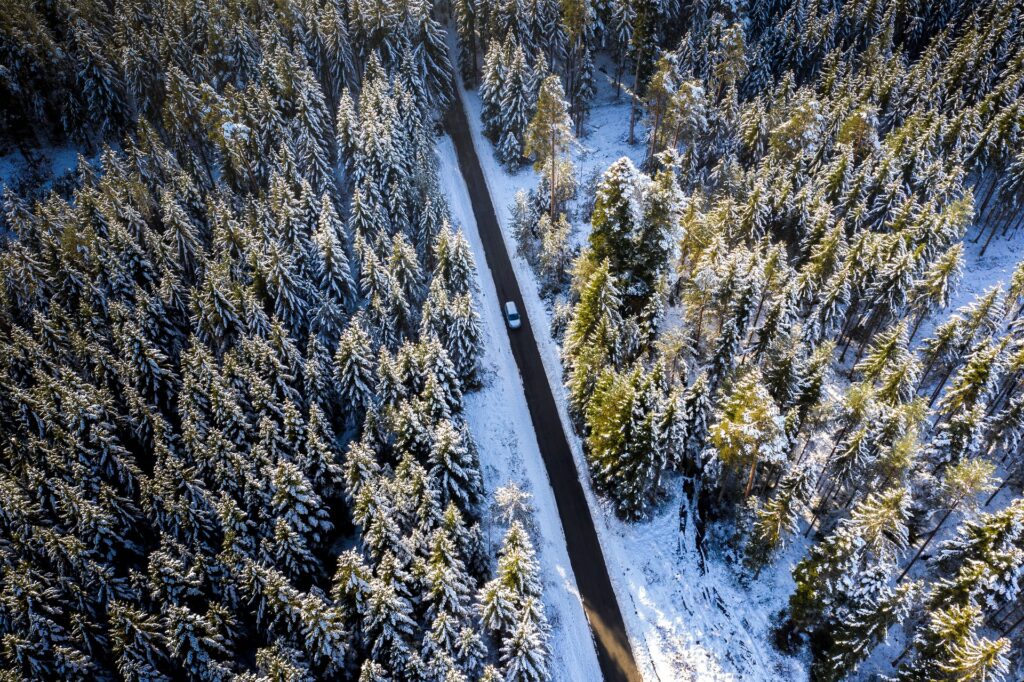
As winter draws closer, drivers up and down the country should be taking extra measures to ensure their vehicles are safe, equipped and well-prepared as the weather turns. Though the change in season should not necessarily be a cause for concern, it is wise to take extra precautions when planning car journeys. We at Oaks Services have devised a quick but comprehensive guide which aims to provide car owners with some tips
Running your car
Cars are built to withstand the effects of the outdoors, including those that come about in the winter months. Like anything else, though, in cases of extreme weather – whether it be temperature drops or hailstorms – cars can be affected. For this reason, it’s a good idea to check the following parts on a regular basis:
- Battery – although car batteries can last up to ten years without replacement, the cold weather can have adverse effects upon the battery’s function. Despite being the most common problem for call-outs for both the RAC and AA, battery problems can easily be avoided. If your car has been out of use for a prolonged period of time, battery chargers and battery testing devices are readily available; a solution that can save you having to have a new battery fitted.
- Tyres – it is really important to check both the condition and pressure of your tyres when planning winter car journeys. Motoring in the winter months requires tyres to have a tread of at least 3mm – a measurement that should be checked once a fortnight.
- Lights – since the winter months mean the days are shorter and darker, those driving in mornings and evenings will rarely be turning off their headlights. Ensure all lights are kept clean, and take extra care to notice if any of your lights have stopped working and need replacing. Remember to always carry spare bulbs in your car.
- Windscreen and wiper blades – be sure to keep your windscreen clean to help minimise glare caused by the winter’s low sun, and be careful when freeing wiper blades up from frozen glass as it’s especially easy to damage them in this process.
- Screenwash – Ensure your screenwash is topped up regularly, and that the wash you use is one that is tailored to, and suitable for, cold conditions.
- Coolant – check your car’s coolant levels regularly, and ensure that there’s enough antifreeze in the coolant. To find out the levels of antifreeze your car’s coolant requires, consult your handbook or go straight to seeking help from a local garage. Don’t ignore coolant levels, as a frozen engine is much harder (and more expensive) to remedy than a simple coolant change.
What to carry
When planning even the shortest journeys in your car this winter, be prepared for any eventuality by taking the following things in your glovebox or a kit stashed away in your boot. The following list gives some ideas adapted from advice given by the AA which could prove invaluable in difficult situations drivers may find themselves in during the winter months.

Things for you
- spare warm clothes or blankets in case of breakdown or unexpected holdups
- hi-vis jacket or tabard in the case of having to leave your vehicle in the dark
- snacks and a drink
- a torch or flashlight to help you locate the area you need in the dark, along with some spare batteries for it
- a shovel for shifting any ice or mud that may block your car’s path
- a pair of good, sturdy boots if you are forced to do any digging or clearing outside in the cold

Things for the car
- a tow rope in case of breakdown, so another vehicle is able to pull your car to safety
- extra screenwash and a bottle of de-icer, along with a scraper for a frozen windscreen and windows
- for those living in particularly remote areas susceptible to severe ground conditions in the winter months, snow chains may be necessary
Planning your journeys
- Always budget extra time for winter journeys; as a rule, people rightly drive at slower speeds in winter, so routes may take longer than usual.
- Leave extra room between you and the vehicle ahead of you to avoid braking suddenly, as snow and ice make it much more difficult to stop quickly in instances where braking is required.
- Check weather reports on the internet or listen on your radio or TV so that you are able to anticipate the weather prior to setting off on your journey. If you feel the conditions are unsafe for driving, be sensible in your expectations and perhaps opt for another mode of transport if required.
At Oak Services, we are a leading provider of MOTs and car servicing in the Surrey area. Our team are dedicated to repairing and restoring your car to its best possible condition, and getting you back on the road quickly and safely. For more information, or to book your service or MOT, get in touch today.

